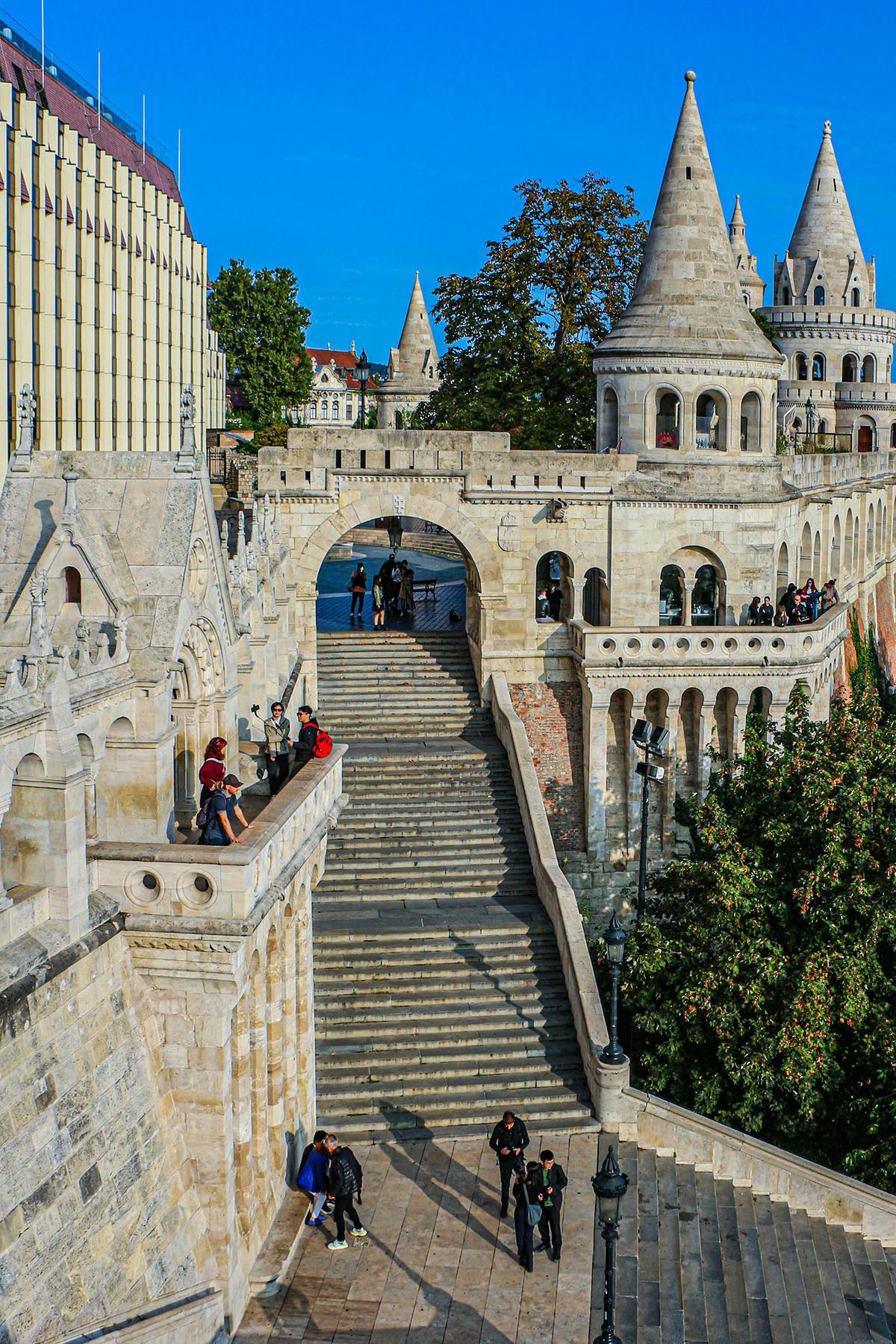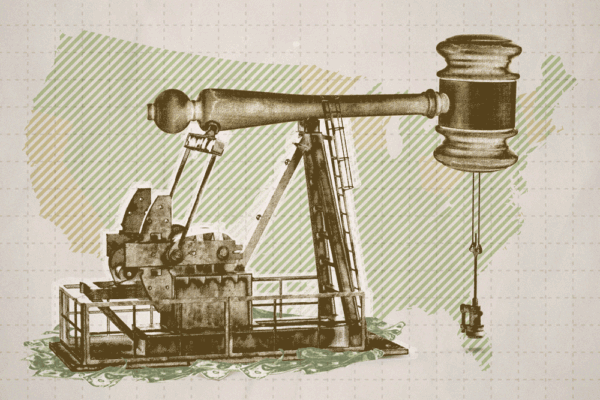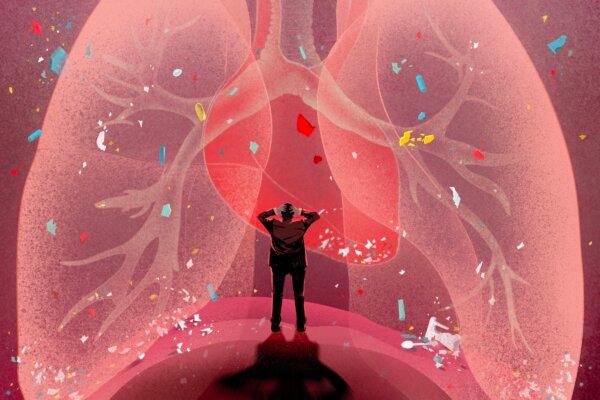Arrival
Budapest’s Ferenc Liszt International Airport (BUD)—often still known locally by its old name, Ferihegy—sits about 14 miles southeast of the Chain Bridge. Although nonstop flights from North America are scarce, the airport receives many flights on national flag bearers (including direct flights from South Korea, Dubai and Istanbul). It’s also a main hub for Hungarian low-cost carrier WizzAir.To reach the heart of the city (which takes 30–45 minutes by car), you have options. Ride-sharing service, Bolt, will set you back about $30–$40. Save a few bucks by hopping on the 100E or 200E bus (about $4), which departs from the airport’s arrivals level and heads straight into the city.

Morning
When you arrive in a new city, it’s helpful to get an initial lay of the land. In Budapest, that’s easy. From the river, go up, and up, and up. Ascending up the winding switchback streets on the Buda side is an excellent way to stretch your legs and get your blood pumping after a long flight.Views from Fisherman’s Bastion are the best in town: the whole city at your feet, the broad Danube curling through it all. Grab a coffee and a croissant, settle in, and chart your course for the rest of the day. The Bastion itself is beautiful and historic. Originally part of the castle walls, legend has it that the fisherman’s guild protected this section. Today’s structure was built in the late-19th century. Seven Neo-Romanesque towers represent the original chieftains who founded Hungary in 895 A.D.


From there, it’s a very short walk to Buda Castle, which encompasses a whole hilltop district called the Castle Quarter. You could easily spend an entire day exploring its cobblestone streets. Instead, opt for a tour inside.
Hungarian kings built their first royal residence on this spot in 1265, although most of the sprawling Baroque palace that sits here today dates to the mid-18th century. A Royal Palace tour will bring you inside, including a visit to the ornate St. Stephen’s Hall, which was recently renovated to its original glory. Then go underground for a cave tour of the labyrinth of tunnels, cellars, and bomb shelters that sit beneath the castle complex.


Afternoon
The Castle Quarter includes a number of other attractions, including the city’s premier history museum, the National Library and the National Gallery. Each could command hours of your time, especially the latter, which includes works by the country’s top artists. But you’ve got to keep moving. After a morning in Buda, spend your afternoon in Pest.Descend to the Danube and walk along the river to reach the Great Market Hall, about 35 minutes away by foot. If you’re tired, you can take a tram, which is another quintessential local experience as it rattles along through the streets. Just across the Liberty Bridge is the city’s largest, oldest covered market.



While the soaring steel structure evokes Gustave Eiffel, who is often mistakenly credited with the design, it was actually Budapest-born Samu Pecz who laid out the plans for this bright, always-busy building. Opened in 1897, it suffered damage from bombs dropped in World War II, then languished in disrepair while Hungary was part of the Eastern Bloc. It was only revived and reopened post-communism in 1997.
Come hungry. After exploring the lower-level fish market, browse the many stalls selling the country’s most famous and best-quality items. These include everything from paprika, the national spice, to local sausage, cheeses and wines from the Tokay wine region. (The latter are so central to the country’s identity that they’re actually mentioned in the Hungarian national anthem.) For lunch, head to the hot food counters, which serve up hearty, steaming dishes like goulash with bread dumplings—fuel for the busy afternoon and evening ahead.
After your meal, walk just across the road to Vaci utca, or Vaci Street, to burn off a few calories. This is the city’s main pedestrian shopping street, home to international brands and sidewalk cafes. It’s not long, just a little under a mile from end-to-end. But you’ll want to take your time to look inside the shops, maybe grab a table and a coffee, and watch the world go by.
A few blocks beyond Vaci Street is Budapest’s Grand Dame hotel, the Four Seasons Gresham Palace. While rooms are pricey, it’s worth stopping in for a drink at Muzsa, the lavish, glamorous lobby bar that celebrates Budapest’s golden age. The menu features Hungary’s finest beverages, and you can order up a flight of palinka, a favorite fruit brandy.

From there, it’s a very short walk to the Jewish Quarter, one of Pest’s coolest neighborhoods. Have a look inside Szimpla Kert, which was the handsome 19th-century home of a wealthy family. Now it’s the most prominent of the city’s “ruin bars,” a strange, whimsical place where you can sip a beer while leaning on a Trabant—an East German-built car that was terrible even when it was brand-new—or climbing into an empty bathtub. If you’re suffering from jet lag, return much later for a nightcap, as the place thrums with music and energy until 4 a.m. on most nights.
Spend a little time nearby in Gozsdu Udvar. This not-so-secret passage—one of many in the city—connects seven different buildings and their interior courtyards. You’ll discover shops, bars, and restaurants. Sample the country’s favorite street food at Langos Bistro, which serves up langos, crispy little pies of fried dough topped with cheese and sour cream. The dish has a long history in Hungary. It was typically cooked in a brick oven when, once a week, people baked their bread—the name literally means “flamed.”

Evening
You’ve had a very busy day. It’s time for a rest. Head out to the Szechenyi Thermal Baths, which opened in 1913 after founders drilled the original well, tapping natural hot mineral water thousands of feet underground. Today, the place feels a little like a palace, built in Neo-Baroque style. Take a therapeutic tour through 15 indoor baths and three large outdoor pools—bartenders serve frosty draft beers, if you’re inclined to sip while you soak.After a little time in the on-site saunas, shower, change, and get ready for an unforgettable dinner. You can’t visit Budapest without spending little time on the water. You’ve never seen anything like this city, sparkling at night, from the middle of the Danube.


On board, enjoy a glass of Tokaji wine (consider a white grape like Irsai Oliver), then settle in for a multi-course dinner cruise with a company like Legenda. As you toast a tiring but magnificent day, the lights of the national parliament, Buda Castle—and the Chain Bridge overhead—will all roll by. They shimmer, glimmer, and entice you to return.













